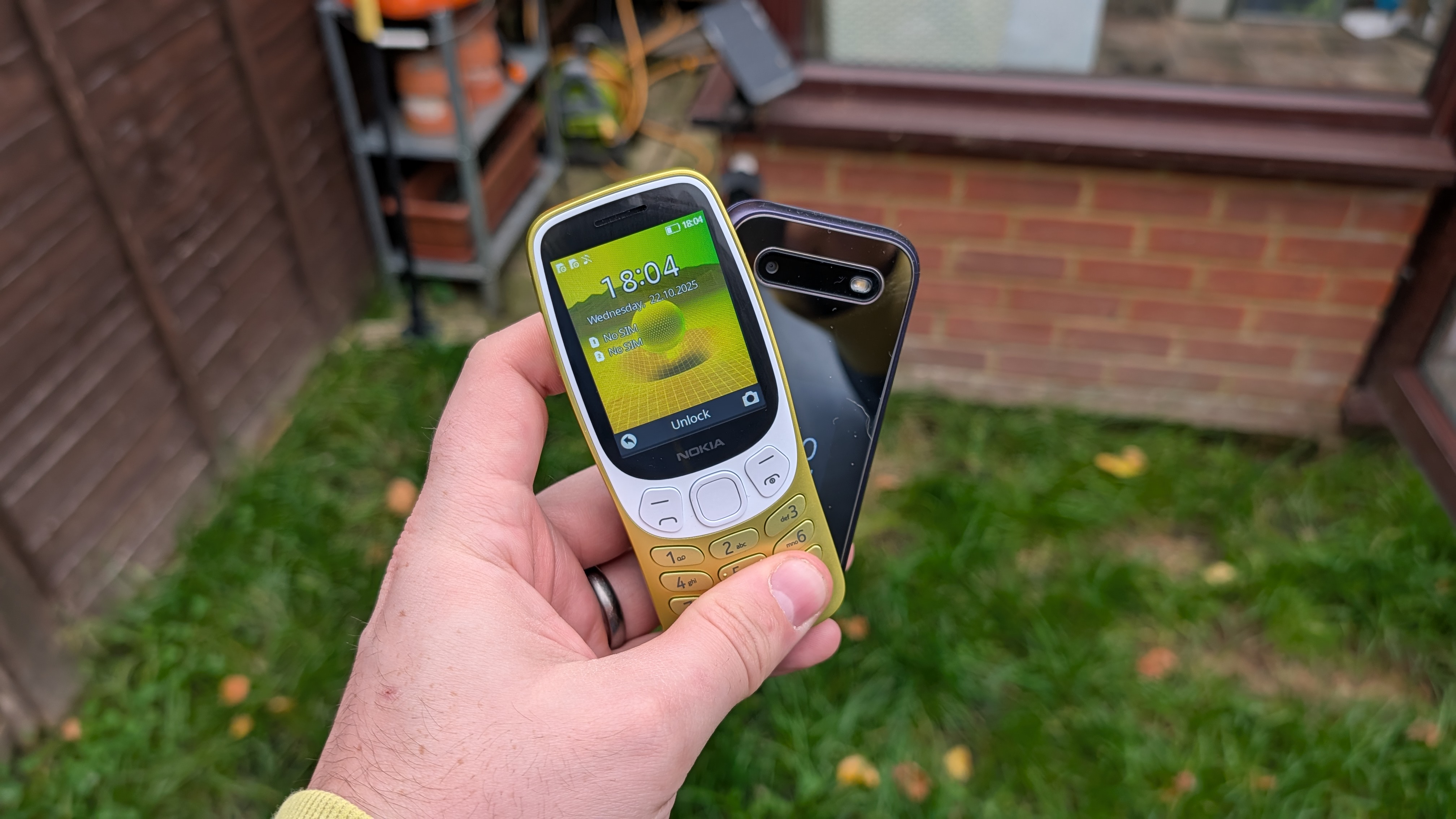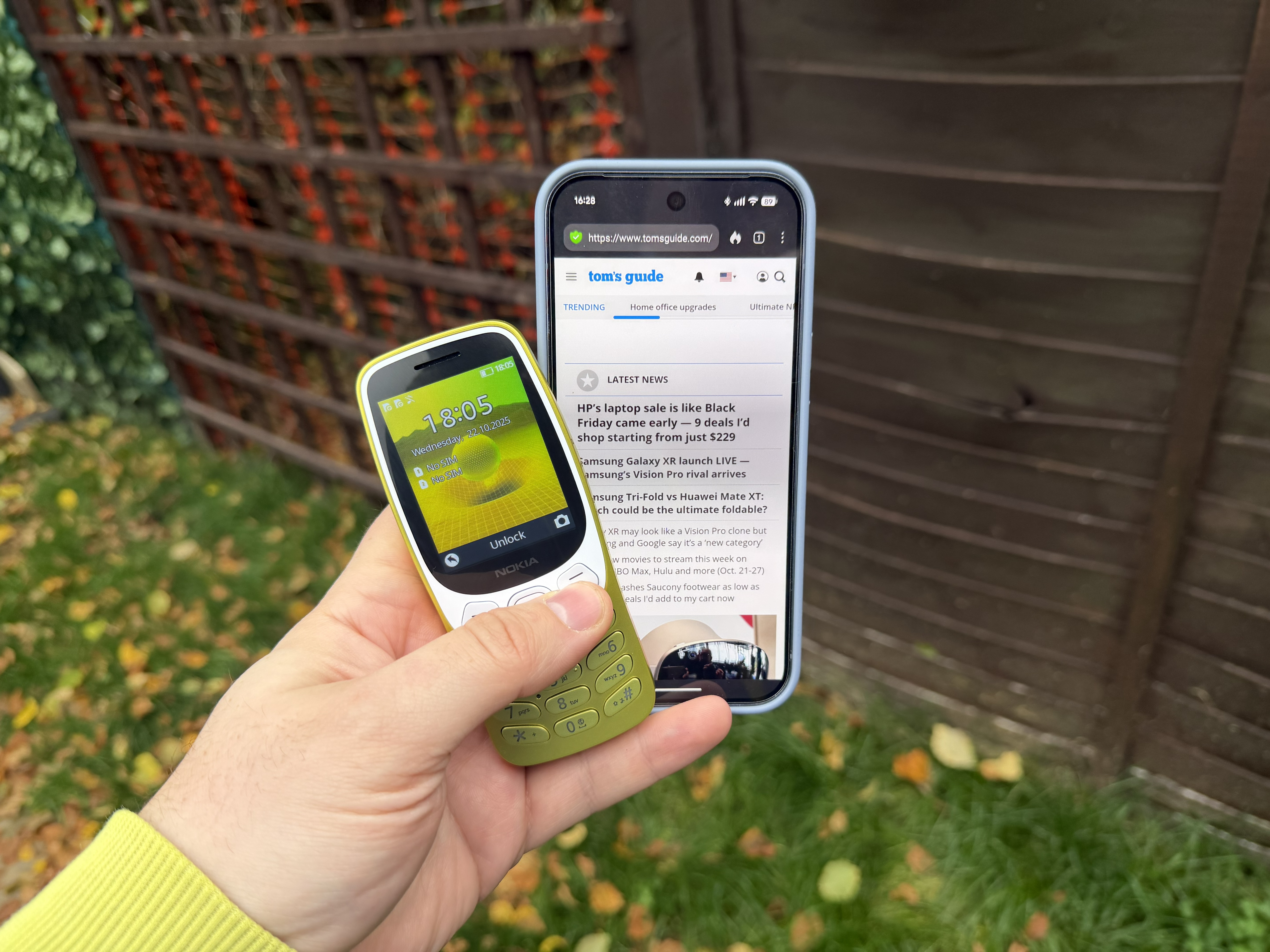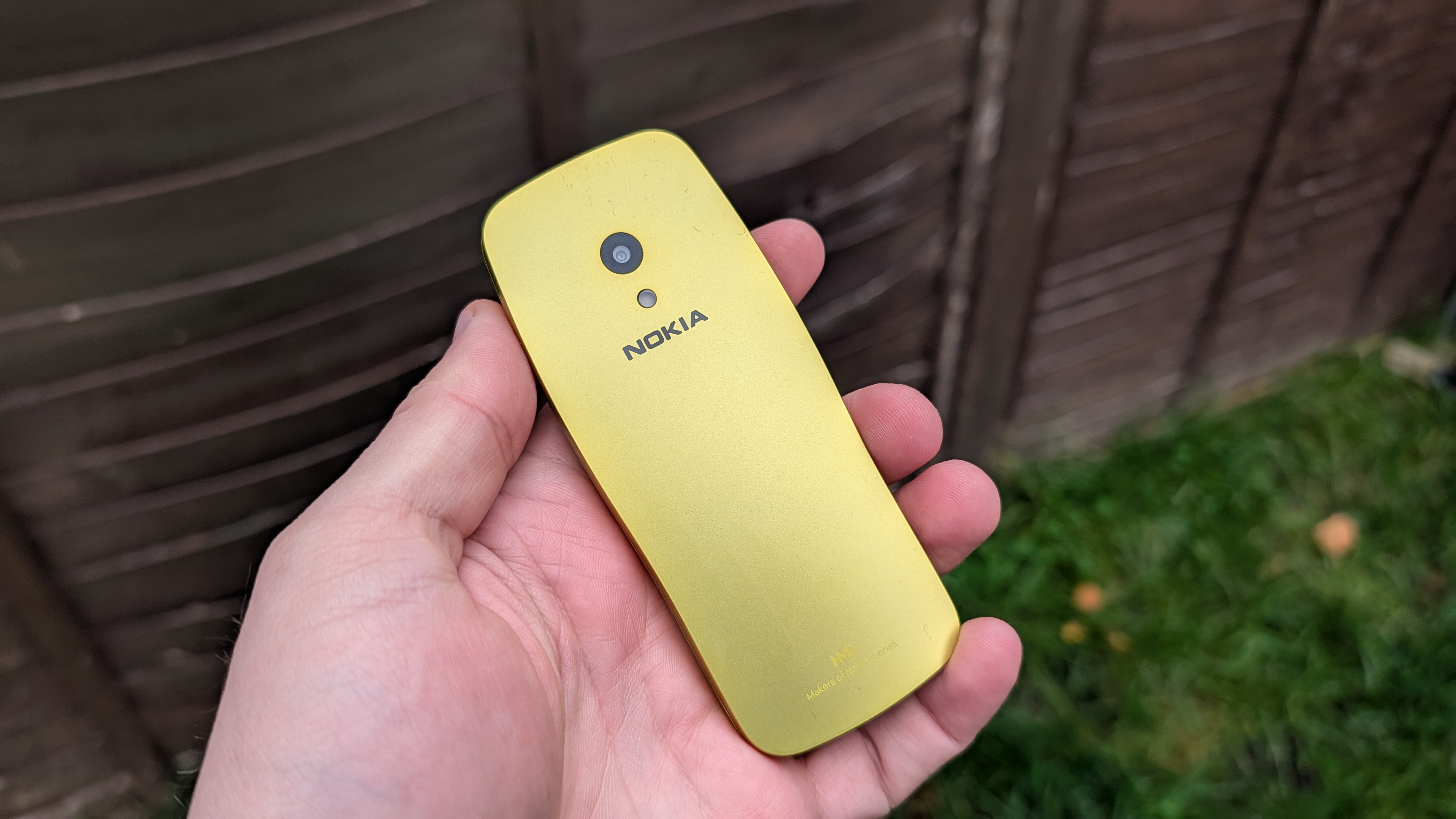Could you ditch your smartphone for an old-school feature phone? Because I tried, and I didn't even last a day

I can rarely be found without my phone. Whether I'm working, walking my dogs, or trying to sleep myself into next year, my phone is always within reach — offering fast access to all the apps and services that I've grown accustomed to over the past 15-plus years of owning one of the best phones.
So the prospect of switching back to an old-fashioned feature phone was pretty daunting. More so when it became apparent that I would be using a model that seems to have been ripped straight out of 2005. Some modern feature phones are surprisingly advanced, offering access to their own app stores, different navigation apps and so on. I would not be using one of those phones.
Straight out of 2005

I had the Nokia 3210 and the HMD 2600 Flip, two phones with different designs that function in more or less the same way. And they're about as basic as cell phones can be without completely removing the screen.
We're talking button navigation, T9 keyboards, small displays and all those other things that were all the rage in the years when the iPod was the pinnacle of Apple's technology.
We're talking button navigation, T9 keyboards, small displays and all those other things that were all the rage in the years when the iPod was the pinnacle of Apple's technology. The only way you can tell these aren't ancient phones from the early '00s is the fact that they have USB-C ports and microSD card slots.
Heck, these phones don't even have Wi-Fi. The only online connectivity you can get comes from 4G/LTE signals, and even that's only officially usable for the web browser. There's no App Store, no apps, and nothing preinstalled that would actually let you use your data plan for anything actually useful. Even the web browser wasn't working properly, and it just wasn't capable of loading the majority of websites I would need to look at.
So, really, these are phones that are about as basic as you can get. To the point that they were pretty much only useful for calls, text messaging and playing Snake. But therein lies the problem. Life, especially my life, has moved beyond what these phones are capable of.
Communication has moved on from SMS

One of the biggest issues with going fully old-school with a cell phone is that the way we communicate has changed. Outside the U.S., WhatsApp reigns supreme and the majority messaging goes through the app. While that has its benefits, the downside is that unlike iMessage or RCS, it doesn't default back to regular SMS messaging at any point.
Get instant access to breaking news, the hottest reviews, great deals and helpful tips.
So if you do the majority of your texting via iMessage, the fact that one of your contacts has gone off the reservation doesn't matter too much. Your messages will still get through, albeit without any of the security you may be used to. That wasn't really an option for me. Not just because I'm primarily an Android user, but also because I was essentially cut off from WhatsApp or any alternatives during my time with both feature phones.
And that's before we even start talking about video calls, group chats or social media. Basic is fine if you, and the people you engage with, are familiar enough that they know how to stay in touch. But to switch back after years of using modern messaging apps and services? That's a totally different story.
Smartphones are a utility

For me, the biggest issue is that smartphones are not just communication devices anymore. They arguably haven't been around for a long time, but the number of things you can do with a phone puts them firmly within the category of "utility" rather than novelty.
I'm not talking about constantly doomscrolling or obsessively posting on social media. I'm talking about apps that offer something important that you can't just get rid of on a whim.
Mobile banking is the one I always come back to, because alternatives are so inconvenient that they're almost not worth dealing with. For example, just this week I got a suspicious transaction on my brand new debit card at 10 p.m., which has only been used a single time. Evidently, someone tried to add it to their PayPal account, and the only reason it failed was that the card is only for emergencies, and I don't keep any money in the linked account.
Had I not had mobile banking, the process of fixing this issue would have taken a lot longer. But within 5 minutes I had frozen the card, spoken to customer service and then ordered a replacement. Had the app not been there to notify me that the fraudulent transaction had been declined, who knows when I would have figured out the problem. I also would have had to call someone, go through various hoops to verify my identity, and drag out the whole process for who knows how long.
Plus, because my bank is digital-first, I was able to add the replacement card to my mobile wallet right away — before the physical card had been dispatched, let alone arrived in my mailbox.
The mobile wallet is another example of an indispensable smartphone feature you don't have with feature phones. Just like access to Authenticator apps, transit tickets, car keys, translation or navigation, and so much more. Heck, I can even use my phone to watch my home's power usage in near-real time. It's not something I do a lot, but it has proven useful on multiple occasions.
Some of this stuff could be done on my laptop, or in a web browser, but in my experience, the ubiquity of smartphones and apps means those alternatives aren't always as good. Online banking isn't nearly as seamless as mobile banking, for example. Or at least, it isn't with my banks.
Bottom line
I understand what people mean when they say we're far too dependent on smartphones, and a lot of people could benefit from spending less time with them. But a total digital detox, and switching back to what amounts to 20-year-old tech isn't really the answer. Whether you like it or not, we've all gotten used to having smartphone capabilities, which means both society and businesses have taken advantage of that.
Needless to say, attempting to switch back to a feature phone was quite the shock to the system, and meant I had to resort to using a smart device for various other things anyway.
Maybe I could do with reducing the amount of time I spend aimlessly looking at my phone, doing nothing of value. But at the same time, I don't think I'm in a good position to just turn my phone off and essentially go off-grid. Because that's just not going to work out for me.
Follow Tom's Guide on Google News to get our up-to-date news, how-tos, and reviews in your feeds. Make sure to click the Follow button.
More from Tom's Guide
- Do you really need a flagship phone? I compared the Galaxy S25 FE vs Galaxy S25 to find out
- I just tested the new ChatGPT Atlas browser — here’s 4 big ways it beats Chrome
- Verizon is paying $100 million in settlements — here's how to check if you're getting paid

Tom is the Tom's Guide's UK Phones Editor, tackling the latest smartphone news and vocally expressing his opinions about upcoming features or changes. It's long way from his days as editor of Gizmodo UK, when pretty much everything was on the table. He’s usually found trying to squeeze another giant Lego set onto the shelf, draining very large cups of coffee, or complaining about how terrible his Smart TV is.
You must confirm your public display name before commenting
Please logout and then login again, you will then be prompted to enter your display name.
